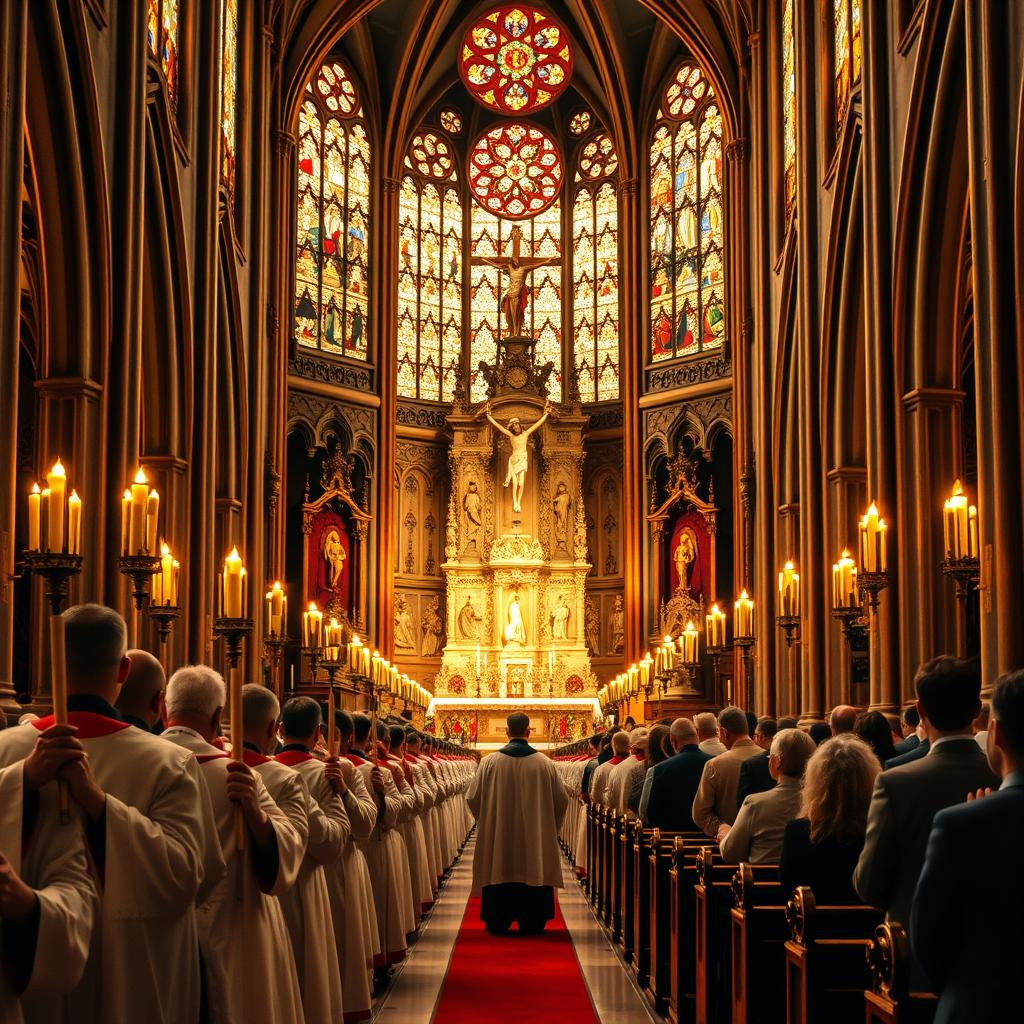The Solemnity of Saints Peter and Paul is a big liturgical celebration in the Catholic Church. It honors the martyrdom of two key apostles. This feast day is on June 29th and has a vigil before it, adding to the traditions.
The vigil has special readings from the Bible. For example, Acts 3:1-10 tells how Peter and John healed a lame man. John 21:15-19 shows Jesus telling Peter to take care of his sheep. These stories show the apostles’ important role in the early Church.
This Catholic feast day is a time to celebrate faith, unity, and the legacy of Peter and Paul.
Key Takeaways
- The Solemnity of Saints Peter and Paul is a significant Catholic feast day.
- The vigil includes readings from Acts, Psalms, Galatians, and John.
- The celebration honors the martyrdom of Saints Peter and Paul.
- The feast day is observed on June 29th.
- The liturgical celebration is rich in traditions and Scripture readings.
The Historical Significance of Saints Peter and Paul
Saints Peter and Paul inspire Christians everywhere. They were devoted to Jesus and helped start and spread Christianity. Their stories show how different yet united they were in their faith.
The Life and Ministry of Saint Peter
From Fisherman to Fisher of Men
Saint Peter was a fisherman from Bethsaida. Jesus called him to be a “fisher of men” (Luke 5:10). This marked the start of his journey as a disciple. Peter showed great faith and leadership among the apostles.
Peter’s Role Among the Apostles
Peter often spoke for the apostles, showing his leadership. His role was key in the early Christian community. This is seen in the New Testament.
The Missionary Journeys of Saint Paul
From Persecutor to Preacher
Saint Paul was once named Saul and was a Pharisee. He persecuted early Christians before his conversion on the road to Damascus (Acts 9:1-31). This experience made him a passionate preacher of the Gospel.
Paul’s Extensive Missionary Work
Paul traveled widely, starting churches and preaching to both Gentiles and Jews. His letters are a big part of the New Testament. They guide Christian beliefs and practices.
Their Martyrdom in Rome
Both Peter and Paul were martyred in Rome during Nero’s reign. Their sacrifice is honored on their feast day. It celebrates their role in the Christian Church.
| Aspect | Saint Peter | Saint Paul |
|---|---|---|
| Original Occupation | Fisherman | Pharisee |
| Key Role | Leader among the Apostles | Preacher to the Gentiles |
| Martyrdom | Martyred in Rome |
“You are Peter, and on this rock I will build my church.” – Matthew 16:18
Jesus’ words to Peter highlight his important role in the Christian Church.
The Solemnity of Saints Peter and Paul, Apostles Vigil in Catholic Tradition
In the Catholic tradition, the feast day of Saints Peter and Paul is very important. It celebrates their lives, work, and death. This shows their key roles in the early Christian Church.
The Meaning of a Solemnity in the Liturgical Calendar
A solemnity in the Catholic Church is a top feast day. It shows the big deal of the event or person being honored. The Liturgical Calendar has many celebrations, but solemnities are especially important. The Solemnity of Saints Peter and Paul is one, honoring their big impact on Christianity.

Why Peter and Paul Are Celebrated Together
Peter and Paul are honored together on June 29th because they died in Rome at the same time. Their feast day recognizes their unique roles in the early Church. Peter was the first pope and leader of the apostles. Paul is known for his missionary work and writings, which are key parts of the New Testament.
The Significance of the Vigil Celebration
The vigil before the feast day is a time to get ready and think about the apostles’ lives. It’s a chance for Catholics to learn more about Peter and Paul’s impact on their faith. The vigil includes special prayers and liturgical elements, preparing for the solemnity.
| Aspect | Peter | Paul |
|---|---|---|
| Role in the Early Church | Leader of the apostles, first pope | Missionary, writer, and apostle to the Gentiles |
| Key Contributions | Leadership, faith, and pastoral care | Missionary journeys, writings, and theological insights |
The Liturgical Context and Celebration Practices
When we celebrate the Solemnity of Saints Peter and Paul, we explore the deep traditions of this Catholic feast day. This Solemnity is a key part of the liturgical year. It helps us follow the life of Christ and the saints.
Placement in the Liturgical Year
The Solemnity of Saints Peter and Paul is on June 29th. This date has been important in the Christian calendar for a long time. It’s a time to honor the apostles when their legacy is most relevant.
Special Liturgical Elements and Prayers
The liturgy for this Solemnity includes special prayers and readings. These focus on Peter and Paul’s roles in the early Christian community. The Collect Prayer asks God to help the Church follow the apostles’ example. The Scripture readings tell us about their mission and martyrdom.
| Liturgical Element | Description |
|---|---|
| Collect Prayer | Petitions God to grant the Church the grace to follow the apostles’ example. |
| Scripture Readings | Recount the mission and martyrdom of Peter and Paul. |
| Vestments | Red vestments symbolizing the martyrdom of the apostles. |
Vestments and Church Decorations
The celebration is made richer with red vestments, showing the apostles’ martyrdom. Church decorations often feature images or icons of Peter and Paul. This highlights their importance in Christian tradition.
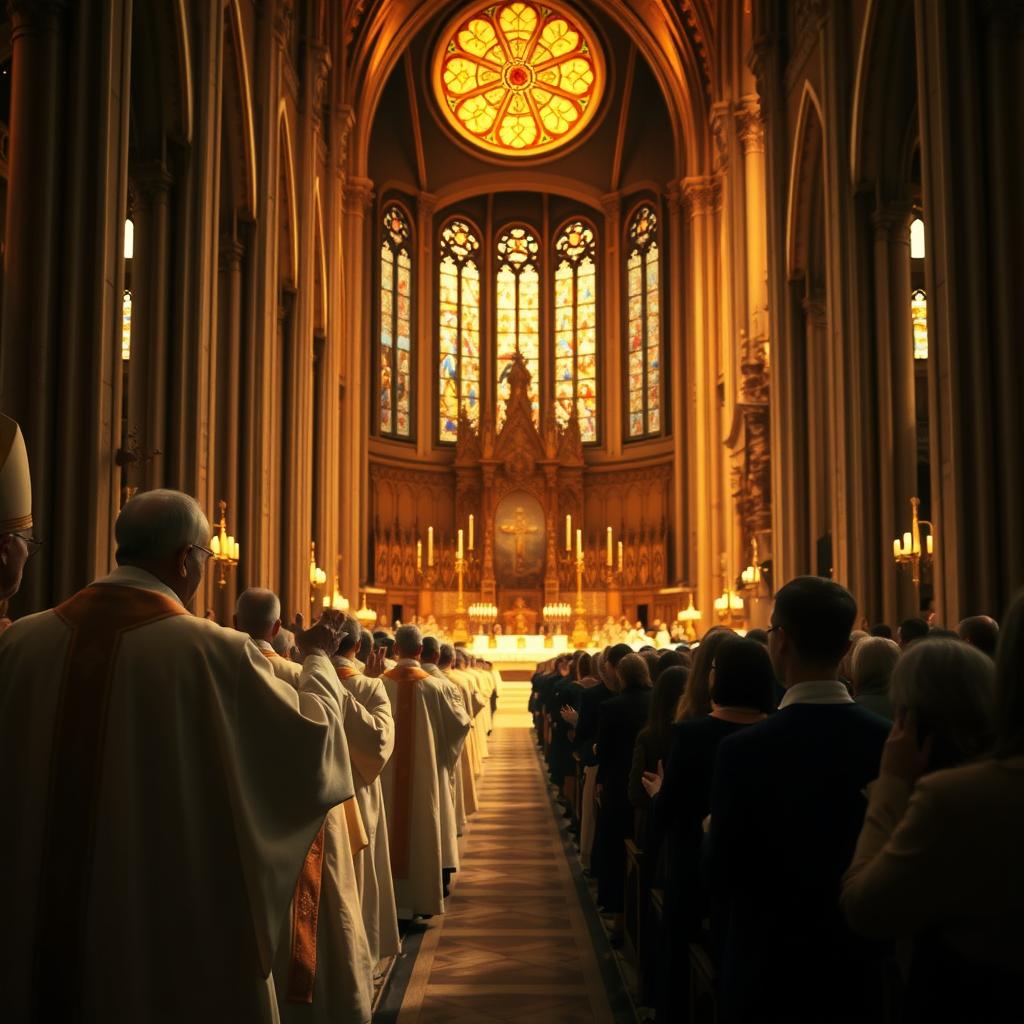
Reading I: Acts3:1-10 – Peter and John at the Beautiful Gate
In Acts 3:1-10, we see a story of faith and healing. Peter and John meet a lame man at the Temple’s Beautiful Gate. This story shows the apostles’ power and gives us a peek into early Christianity.
Historical and Temple Context
The event happened at the Beautiful Gate of the Temple in Jerusalem. It was a key spot for Jewish worship. The ninth hour, or 3 PM, was a time for prayer, making the event even more special.
The Significance of the Beautiful Gate
The Beautiful Gate was known for its beauty and grandeur. It was where Peter and John found a lame man begging. The gate was not just an entrance but a spiritual gateway.
The Ninth Hour of Prayer
The ninth hour was a sacred time for prayer in the Jewish tradition. Peter and John’s presence at this hour showed their commitment to prayer and faith. “At the ninth hour of prayer, Peter and John went to the Temple, where they encountered a man lame from birth” (Acts 3:1).
Peter’s Role in the Healing Miracle
Peter and John were key in the healing miracle. By using Jesus’ name, Peter told the lame man to “walk” (Acts 3:6). This showed Peter’s faith and his authority from Jesus.
The Power of Jesus’ Name Invoked
The healing showed the power of Jesus’ name. Peter said, “Silver and gold I do not have, but what I have I give you. In the name of Jesus Christ of Nazareth, walk” (Acts 3:6), and the man was healed. This miracle was a powerful sign of faith in Jesus Christ.
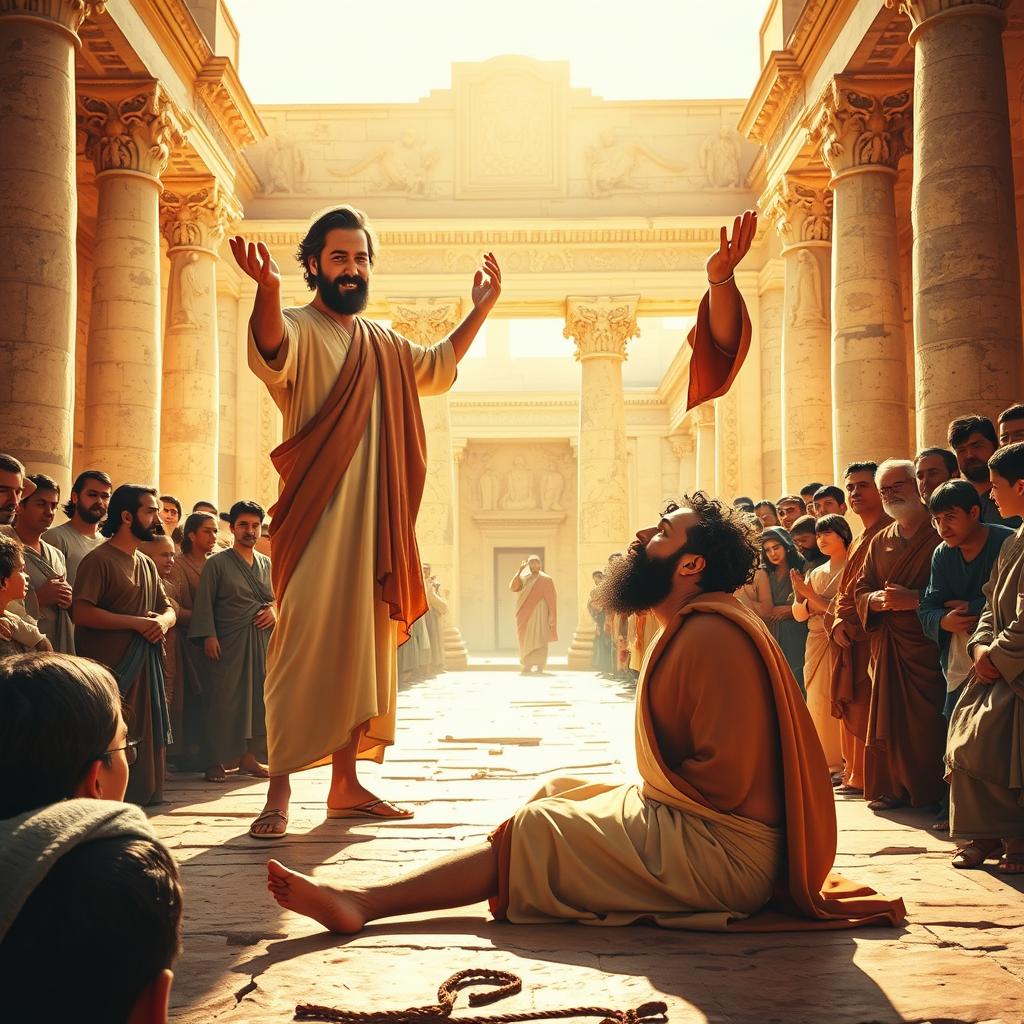
“The name of Jesus Christ” became a source of power and healing. This theme is found throughout the New Testament. The Psalmist says, “The heavens declare the glory of God; the skies proclaim the work of his hands” (
Psalm 19:1
), showing God’s glory through creation and the apostles’ ministry.
The Lame Man’s Transformation: A Symbol of Spiritual Renewal
In Acts 3, we see a miracle that shows the power of faith. Peter and John healed a lame man at the Beautiful Gate. This miracle is more than just a physical fix; it’s a sign of spiritual renewal.

Physical Healing as Spiritual Metaphor
The lame man’s healing is a symbol for spiritual healing through faith in Jesus Christ. Just as his body was fixed, our spirits can be renewed by faith.
The Man’s Response: Walking, Leaping, and Praising
The man’s reaction to being healed shows the miracle’s power. He starts walking, leaping, and praising God. This shows the joy and thanks that come from feeling God’s power.
The Witness to the Temple Worshippers
This event is a strong witness to those worshipping at the Temple. It shows the importance of Jesus’ name and the apostles’ mission. The miracle proves the connection between faith and spiritual renewal.
Apostolic Authority and Spiritual Gifts in Acts3:1-10
The healing of the lame man by Peter and John is a key event. It shows the apostolic authority and spiritual gifts in the early Christian community. This miracle, in Acts 3:1-10, proves the power of faith and the difference between material and spiritual wealth.

Peter’s Declaration: “Silver and Gold I Do Not Have”
Peter says, “Silver and gold I do not have,” showing the apostles’ focus on spiritual wealth. The healing of the lame man follows, proving true power comes from the name of Jesus Christ. Such healings show the spiritual gifts given to the apostles.
The Greater Gift of Healing and Restoration
The lame man’s healing is a greater gift than wealth. It shows the restoration of body and spirit, pointing to Christ’s full salvation. This event teaches believers to seek spiritual gifts and trust in prayer.
Lessons for Modern Christian Ministry
Acts 3:1-10 teaches valuable lessons for today’s Christian ministry. It highlights the importance of faith, prayer, and spiritual gifts. Celebrating the catholic feast day of Saints Peter and Paul reminds us of their lasting legacy and our mission to follow.
By observing this religious observance, Christians are encouraged to think about the importance of christian saints like Peter and Paul. They showed strong faith and a commitment to sharing the Gospel.
Responsorial Psalm: Psalm19:2-5 – Creation Proclaims God’s Glory
Psalm 19:2-5 reminds us of the deep bond between creation and God. This psalm beautifully uses nature to show how the heavens and firmament shout out God’s glory.
Poetic Structure and Natural Imagery
The psalm’s beauty lies in its vivid natural images. It tells us that the heavens are God’s messengers, sharing His glory with everyone.
The Heavens as Divine Messengers
The heavens and firmament are more than just space. They are seen as active messengers of God’s glory. This shows that creation itself speaks of God’s power and majesty.
Day and Night as Continuous Witnesses
The psalm also says that day and night are always telling us about God’s presence. This shows God’s glory is everywhere, all the time.
Connection to the Apostles’ Universal Mission
The message of Psalm 19:2-5 matches the apostles’ mission to reach all people. Just as creation shares God’s glory with everyone, the apostles were sent to spread salvation to all nations.

The Silent Yet Powerful Testimony of Creation
This psalm teaches us about the spiritual importance of creation. It encourages us to think about the liturgical celebration and holy day. It reminds us of God’s presence in everything around us.
In the context of the Solemnity of Saints Peter and Paul, Psalm 19:2-5 deepens our understanding of the apostles’ mission. It shows the wide reach of their message, echoing the silent yet powerful voice of creation.
Reading II: Galatians1:11-20 – Paul’s Defense of His Apostleship
Paul defends his apostleship in Galatians 1:11-20. He says it comes from a divine revelation, not human tradition. This is key to understanding his role in early Christianity and his ties with other apostles.
The Divine Origin of Paul’s Gospel
The divine origin of Paul’s Gospel is central in Galatians 1:11-20. Paul makes it clear his message came from Jesus Christ, not humans.
Not from Human Teaching
Paul says his apostleship wasn’t from human teaching or authority. It was a direct result of God’s revelation.
Received through Revelation
The revelation on the road to Damascus changed Paul’s life. It made him a passionate preacher of the Gospel.
Paul’s Dramatic Conversion Experience
Paul’s conversion shows God’s grace is powerful. He went from persecuting Christians to becoming a key figure in early Christianity.
His Initial Independence from the Jerusalem Apostles
After his conversion, Paul spent time in Arabia before returning to Damascus. He later visited Jerusalem, meeting Peter and James. But at first, his ministry was independent of the Jerusalem apostles.
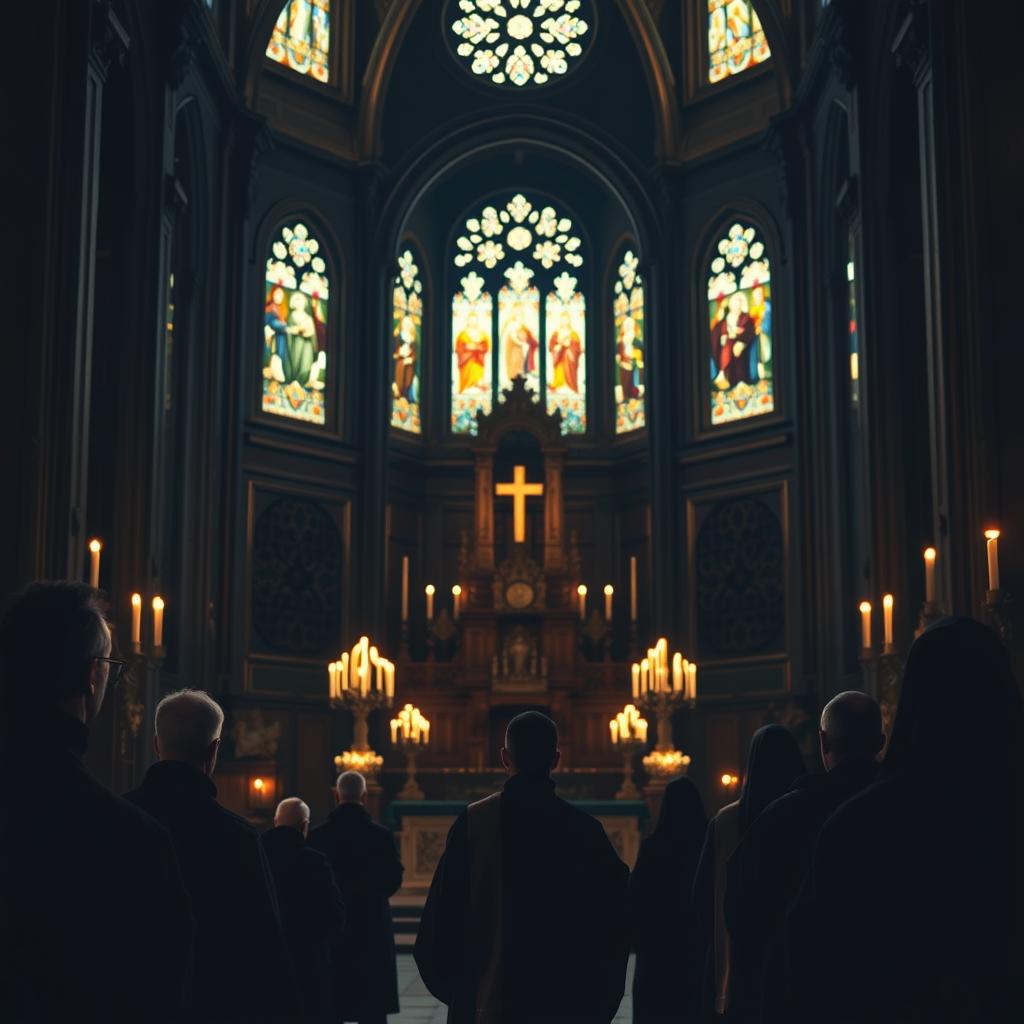
This passage shows Paul’s apostleship is authentic and comes from God. It strengthens his authority in the early Christian community.
Paul’s Transformation and Calling in Galatians1:11-20
Paul’s change from a zealous persecutor to a passionate preacher shows God’s grace. This change is key to Christian faith. It’s celebrated on the Catholic feast day of Saints Peter and Paul.

From Persecutor to Preacher
Paul’s conversion, as told in Galatians 1:11-20, was a big change. He went from hunting down Christians to spreading Christ’s message. This wasn’t just a change in beliefs but a deep transformation by God’s grace.
The Three Years in Arabia: Paul’s Formation
After his conversion, Paul spent three years in Arabia. This time was vital for his growth as an apostle. He could think about his experience, get more revelations from God, and get ready for his missions.
God’s Purpose in Choosing an Unlikely Apostle
Choosing Paul, a former persecutor, as an apostle shows God’s unexpected ways. This choice emphasizes grace and redemption. It’s a key part of celebrating saints like Paul.
Thinking about Paul’s transformation and calling reminds us of faith’s power and God’s grace. This reflection deepens our understanding of the catholic feast day and its importance in our spiritual journey.
Paul’s Relationship with Peter and the Early Church
Paul’s bond with Peter, as seen in Galatians, sheds light on the early Christian community. He spent fifteen days with Cephas (Peter) in Jerusalem. This time helped him grasp Peter’s work and the Church’s early days.
The Fifteen Days with Cephas (Peter) in Jerusalem
This period was key for Paul. It let him connect with Peter, one of Jesus’ twelve apostles. Paul saw it as a chance to learn from Peter and grasp the apostolic tradition.
Meeting James, the Lord’s Brother
Paul also met James, the Lord’s brother during his visit. James was a key figure in the Jerusalem Church. This meeting broadened Paul’s view of early Christian leadership and their shared goals.
The Balance of Independence and Communion
Paul’s ties with Peter and James show the importance of balance. They highlight the need for independence in mission and communion with early Church leaders. This balance kept the early Christian community united, despite their varied backgrounds and callings.

As Paul carried out his apostolic work, his interactions with Peter and James were crucial. They laid the groundwork for his mission and message. This unity and cooperation were key to the early Church’s religious observance and liturgical calendar.
Gospel: John21:15-19 – Peter’s Restoration and Commission
The Gospel reading from John 21:15-19 tells of Jesus restoring Peter after his resurrection. Jesus commissions Peter to care for his followers. This event is set against the backdrop of a miraculous catch of fish by the Sea of Galilee. This moment holds deep symbolic meaning for the disciples and for Peter’s role in the early Christian community.
The Setting: Breakfast by the Sea of Galilee
The scene is set after Jesus’ resurrection, where he appears to his disciples by the Sea of Galilee. The narrative includes a miraculous catch of fish, a familiar motif from Jesus’ earlier ministry.
After the Miraculous Catch of Fish
The miraculous catch of fish reminds us of Jesus’ power and provision. It also sets the stage for Jesus’ dialogue with Peter, emphasizing the apostle’s role in the community of believers.
The Symbolism of the Charcoal Fire
The charcoal fire, around which Jesus and the disciples gather for breakfast, holds symbolic significance. It may recall the fire around which Peter had denied Jesus during the Passion narrative. This serves as a poignant backdrop for Jesus’ restoration of Peter.
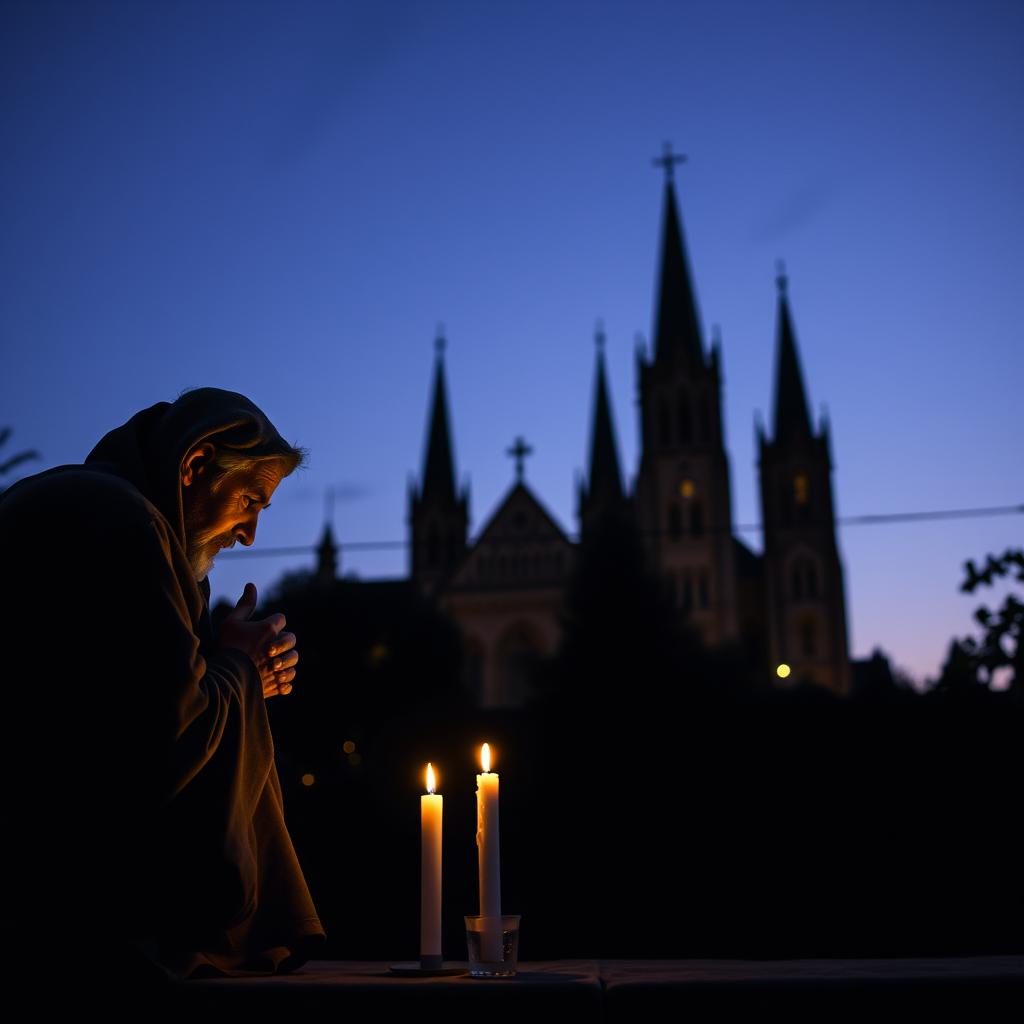
The Threefold Question: “Do You Love Me?”
Jesus’ threefold question to Peter, “Do you love me?” is a direct counterpoint to Peter’s threefold denial of Jesus during the Passion. This repetition underscores the depth of Jesus’ forgiveness and the seriousness of the commission he is about to give to Peter.
Peter’s response to Jesus’ question, though sorrowful, affirms his love and commitment. Jesus’ command to “feed my sheep” follows, signifying Peter’s role as a shepherd to the community of believers.
Jesus’ Command to “Feed My Sheep”
The command to “feed my sheep” is a powerful commission that underscores Peter’s responsibility towards the early Christian community. It signifies not just a pastoral role but a teaching and guiding one. It emphasizes the importance of nurturing the faith of the followers of Jesus.
| Key Elements | Symbolic Meaning |
|---|---|
| Miraculous Catch of Fish | Jesus’ Power and Provision |
| Charcoal Fire | Restoration and Forgiveness |
| Threefold Question | Counterpoint to Peter’s Denial |
| Command to “Feed My Sheep” | Peter’s Commission and Responsibility |
The Prophecy of Peter’s Death and Glorification
The prophecy of Peter’s death and glorification is a key moment in the Gospel. It shows the cost of following Jesus. Jesus told Peter he would die, as recorded in John 21:18-19. This shows Peter’s strong faith and dedication.
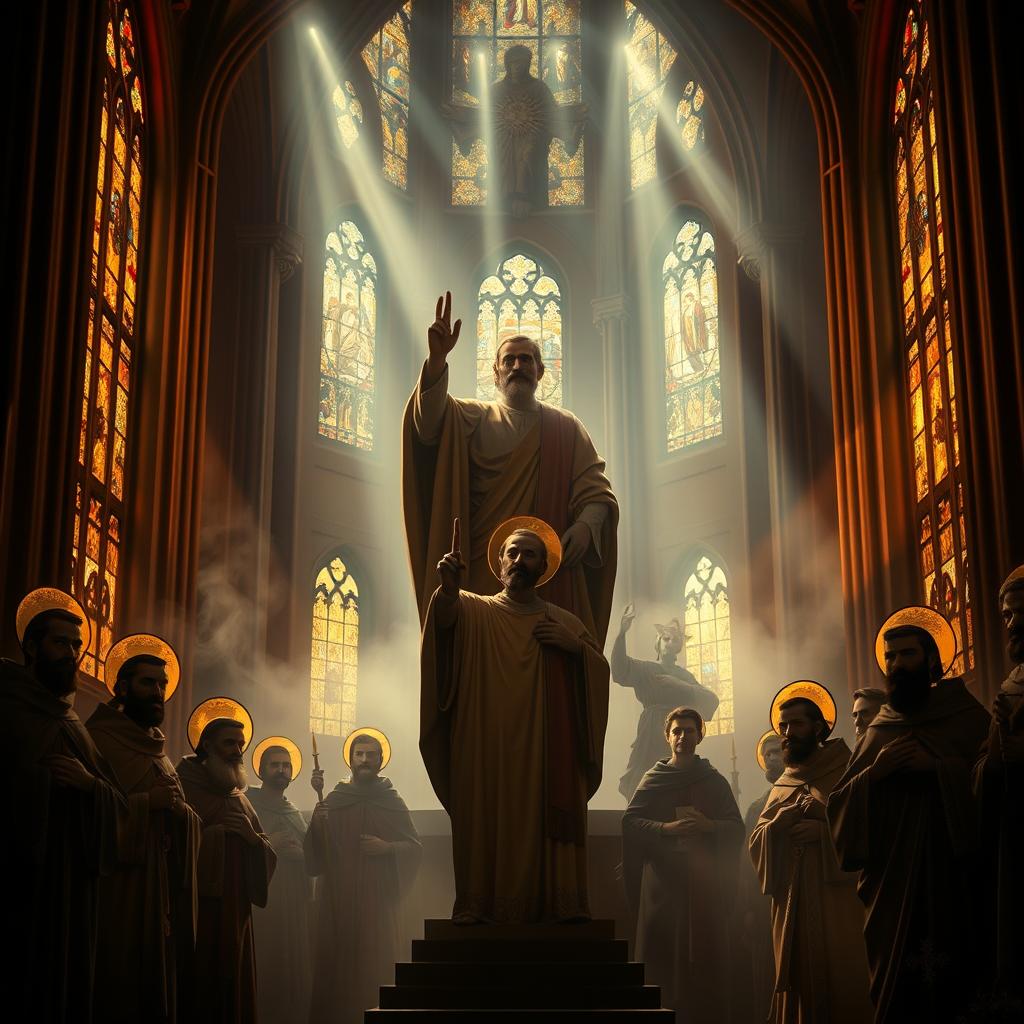
Jesus’ Prediction of Peter’s Martyrdom
Jesus said Peter would die, “When you were younger, you used to dress yourself and go where you wanted; but when you grow old, you will stretch out your hands, and someone else will dress you and lead you where you do not want to go” (John 21:18). This prophecy tells us Peter would die for his faith. It also shows the sacrifice he would make.
The Meaning of “Stretch Out Your Hands”
The image of stretching out hands is a strong symbol of Peter’s sacrifice. This act is often seen as a sign of being crucified. It shows Peter’s ultimate witness to his faith in Jesus Christ.
Peter’s Ultimate Witness through Suffering
Peter’s death, as Jesus predicted, shows his unwavering commitment to Christianity. This event is celebrated on the catholic feast day of Saints Peter and Paul. It reminds us of the importance of staying true to our faith, even when it’s hard.
Comparing Peter and Paul: Complementary Pillars of the Church
Peter and Paul, though different, were key to the early Church. Their stories in the New Testament show how diverse callings enriched the community.
Different Backgrounds and Conversion Stories
Peter was a fisherman from Galilee, one of Jesus’ twelve apostles. Paul, once named Saul, was a Pharisee from Tarsus who turned against early Christians before his conversion. Their backgrounds and conversions show Christianity welcomes all.
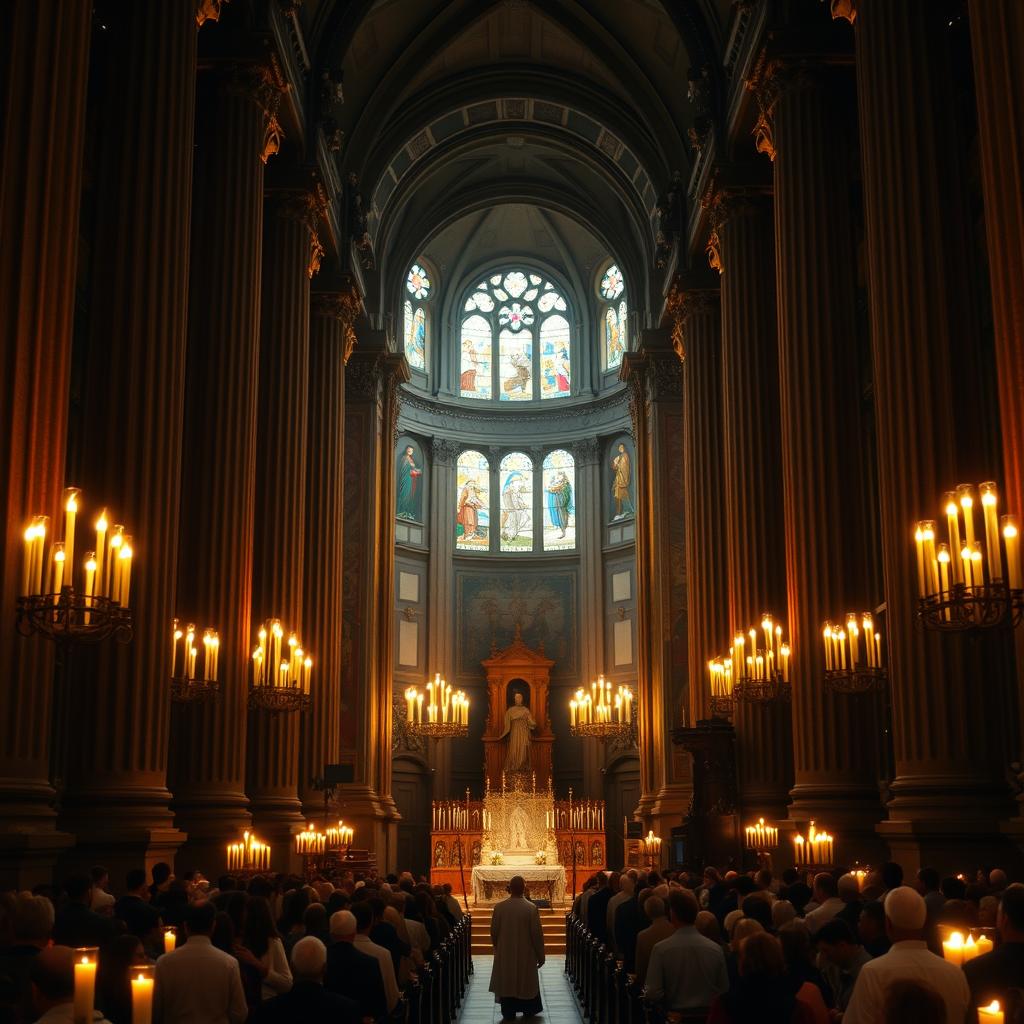
Distinct Yet Harmonious Theological Emphases
Peter worked with the Jewish Christian community, while Paul reached out to Gentiles. Their teachings, though different, fit together. Peter focused on Jesus’ life, while Paul highlighted Christ’s universal message.
Their Lasting Impact on Christian Doctrine and Practice
Peter and Paul’s legacy shapes Christian beliefs and actions. Their writings and stories in the New Testament teach about faith, grace, and the Church. The liturgical celebration of their solemnity reminds us of their lasting impact.
Their stories motivate today’s Christians to deepen their faith. As we honor Peter and Paul, we celebrate their contributions to our tradition and their ongoing relevance.
The Papacy and Apostolic Succession Through the Ages
The Catholic Church’s heritage is deeply rooted in apostolic succession. This traces back to Peter, seen as the first pope. This idea is key to the Church’s identity and its link to the early Christian community.
Peter as the Rock and First Pope
Peter is called the “rock” on which the Church stands, based on Matthew 16:18. This shows Peter’s big role among the apostles and his leadership in the early Church.
The Significance of Rome in Church History
Rome, where Peter and Paul were martyred, is very important in Church history. It became a key spot for Christianity. The Bishop of Rome, the Pope, became a major figure in the Church’s leadership.
Modern Papal Celebrations of this Solemnity
Today, the Solemnity of Saints Peter and Paul is celebrated with great enthusiasm in Rome and globally. The Pope has a big role in these celebrations, leading special liturgies and events.
| Aspect | Significance | Modern Relevance |
|---|---|---|
| Peter as the First Pope | Establishes apostolic succession | Continues to influence Catholic doctrine |
| Rome in Church History | Central location for early Christianity | Remains a pilgrimage site and spiritual hub |
| Papal Celebrations | Highlights the legacy of Peter and Paul | Unites Catholics worldwide in a shared tradition |
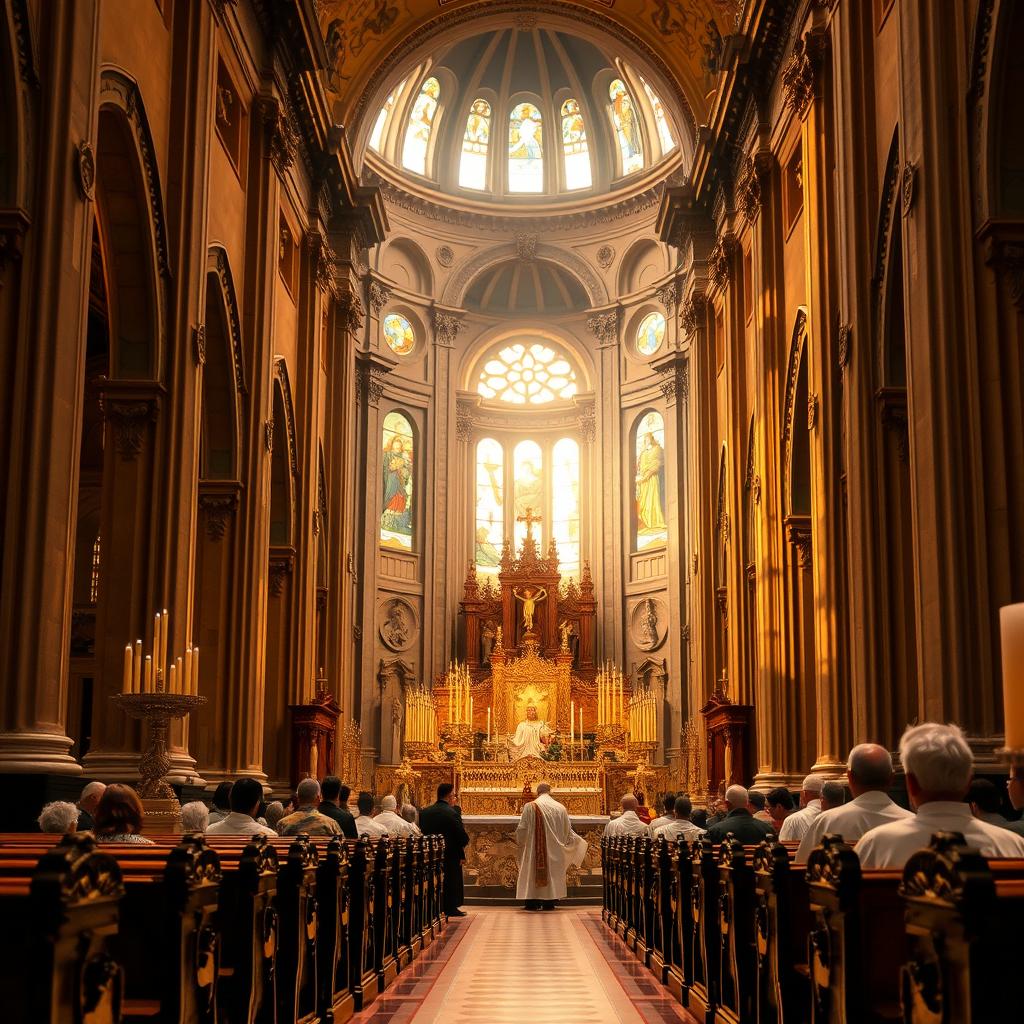
The Solemnity of Saints Peter and Paul shows the lasting impact of these two apostles. As the Catholic Church faces today’s challenges, Peter and Paul’s example reminds us of the value of faith, courage, and leadership.
Celebrating the Solemnity in Parishes and Homes Today
The Solemnity of Saints Peter and Paul is a cherished tradition. It brings faith to life in parishes and homes. This holy day is a chance for Catholics to think about the apostles’ lives and teachings.
Traditional Customs and Devotional Practices
Parishes mark the Solemnity with special prayers and liturgies. These highlight Saints Peter and Paul’s role in Catholic tradition. Families can also pray the Rosary or honor the apostles with hymns and icons.
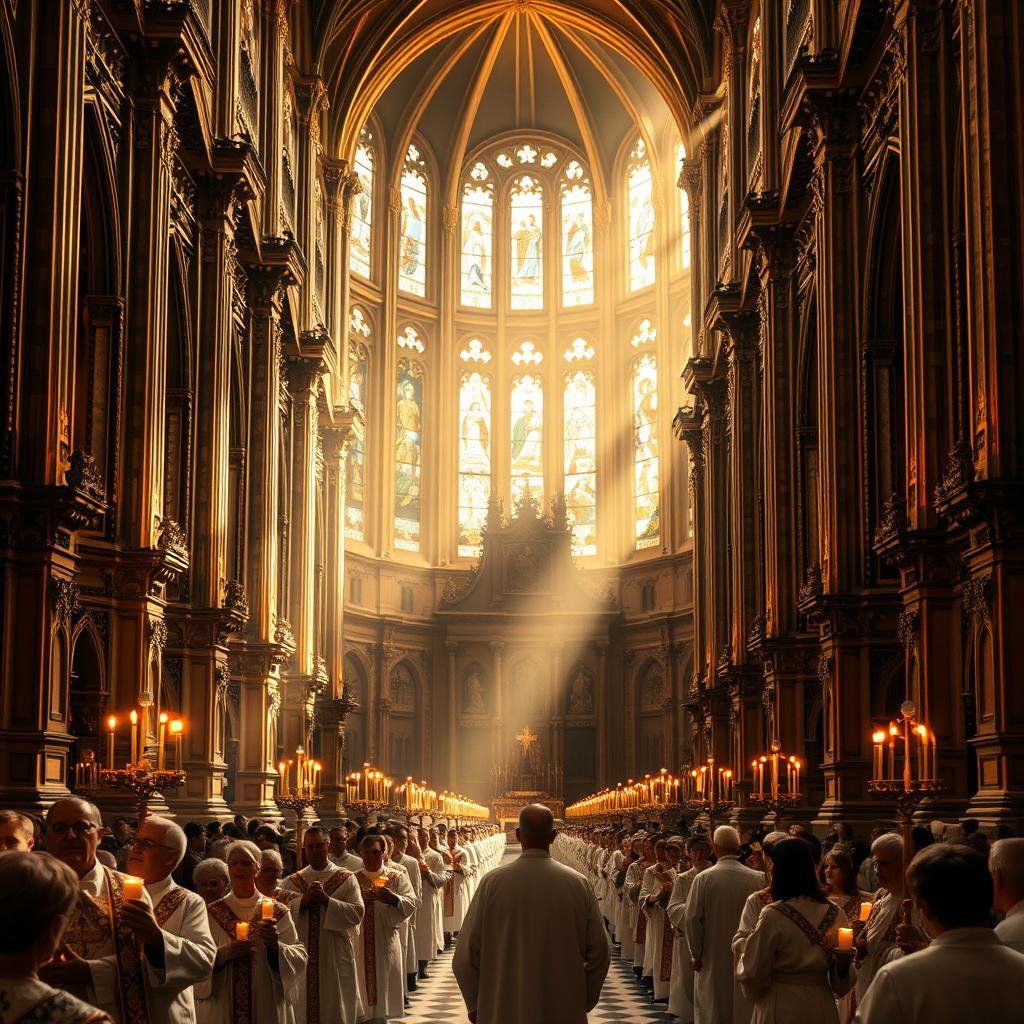
Family Activities and Prayer Services
Families can do many things to celebrate the Solemnity. They might:
- Have a prayer service at home, focusing on the apostles’ early Church roles.
- Talk about the apostles’ martyrdom and its significance.
- Make traditional meals or desserts for the feast day.
Community Celebrations and Processions
Community events are key to the Solemnity. They bring people together. Many parishes hold processions, where people carry icons or relics of the apostles. This shows their bond with the global Church.
| Activity | Location | Significance |
|---|---|---|
| Special Liturgies | Parishes | Highlighting the apostles’ importance |
| Prayer Services | Homes and Parishes | Deepening faith through communal prayer |
| Processions | Public Spaces | Demonstrating unity and devotion |
By taking part in these activities, Catholics honor Saints Peter and Paul. They embrace the spiritual value of their witness to Christ.
Carrying Forward the Apostolic Legacy in Our Time
Reflecting on the solemnity of saints Peter and Paul, we see their vigil’s importance. Their legacy inspires and guides us, teaching courage, faith, and mission.
Their stories in scripture highlight the need to spread the Gospel and live our faith. In today’s world, their examples remind us of the value of apostolic faith and missionary zeal.
By following Peter and Paul’s spirit, the Christian community can grow and succeed. We carry their legacy into our time.
